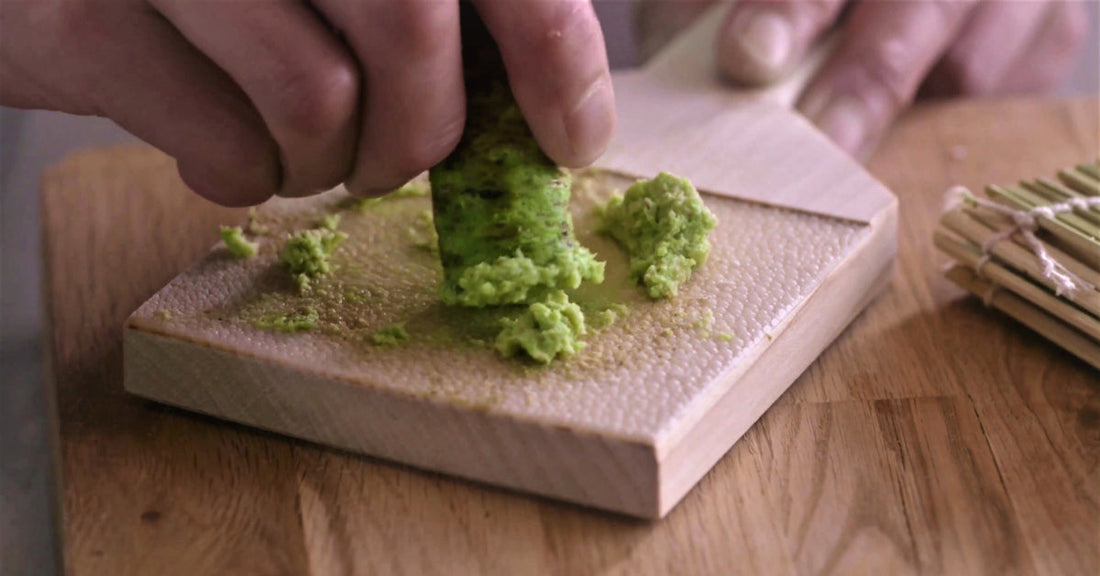The Role of Wasabi in Traditional Japanese Culture

When most people think of wasabi, they picture a spicy green paste squeezed next to their sushi rolls. But did you know that real wasabi is more than just a strong flavor? It’s part of a much deeper tradition that goes back over a thousand years in Japan. Behind the bold taste is a story of mountains, rivers, and careful farming that has made wasabi a powerful part of Japanese culture.
The kind of wasabi used in most restaurants isn’t the real thing. It’s usually just horseradish with green coloring. But true wasabi—made from the Wasabia japonica plant—is rare, special, and treated like a treasure in Japan. At Real Wasabi, we’re proud to grow and share this unique plant with people who want the full flavor and cultural experience.
So, what makes wasabi so important in Japan? And why is the real version so different from what you might be used to? Let’s explore how this spicy root has become a symbol of tradition, quality, and health in Japanese life.
Wasabi: A Spice With Deep Roots
Real wasabi comes from a plant called Wasabia japonica, also known as the wasabi Japanese horseradish. This plant grows naturally in cold, clear mountain streams in Japan. It takes a lot of care and time—up to two years—to grow just one plant. That’s why it’s so rare.
In the past, wasabi was used not only for its flavor but also because it was believed to offer *health benefits. It was thought to help keep raw foods safe to eat, which made it a perfect match for sushi. This led to the traditional use of wasabi as both a flavor enhancer and a natural protector.
A Key Ingredient in Sushi Culture
If you’ve ever had sushi in Japan, you’ll notice something different—wasabi is not just placed on the side. In real wasabi in sushi culture, a small amount of fresh wasabi is placed between the fish and the rice. This helps to bring out the flavor of the fish without overpowering it.
This practice is part of what makes Japanese food so special. Chefs are trained to use wasabi with care and respect, treating it as more than just a spice. It’s a sign of tradition, balance, and quality.
From Mountain Streams to Your Plate
There are many different types of Wasabia japonica cultivars, each with slightly different flavors and growing needs. All of them, however, require clean water, cool temperatures, and lots of patience.
At Real Wasabi, we grow our plants using natural methods to keep their quality and flavor as close to the traditional Japanese kind as possible. We offer Japanese wasabi powder, wasabi powders such as rhizome powder, culinary powder, petiole (stem) and leaf powder, and fresh wasabi to bring the real taste of Japan to your kitchen.
A Star among Japanese Culinary Herbs and Spices
Wasabi is not just a sushi topping. It’s one of the most respected Japanese culinary herbs and spices. In traditional cooking, herbs like wasabi are chosen not just for flavor but because they are believed to support balance and well-being.
Wasabi’s strong yet spicy taste adds excitement to all kinds of dishes—from noodles and sauces to dressings and dips.
Why We Do What We Do?
At Real Wasabi, we’re more than just growers—we’re keepers of a tradition. Our goal is to protect the original flavor and story of Wasabi as a cultural symbol and share it with people who appreciate the difference.
We don’t believe in shortcuts. Our wasabi is grown the hard way—slowly, naturally, and with respect for the past. When you order from us, you’re not just buying a product. You’re experiencing a piece of Japanese heritage.
FAQs
Q1: What is the difference between real wasabi and the kind at most restaurants?
Real wasabi is made from the wasabi japonica plant. In most restaurants, wasabi is made from horseradish, mustard, and green dye.
Q2: Why is real wasabi so rare?
It takes up to two years to grow and needs clean, cold water and shade. That makes it harder to farm than other crops.
Q3: How do you use wasabi powder at home?
Our Japanese wasabi powder and wasabi rhizome powder can be mixed with water to make a fresh paste, or added to sauces, dressings, and marinades. Add culinary powder, which is a mix of Rhizome, petiole (stem), and leaf powder.
Q4: What makes Real Wasabi different?
We grow real, authentic wasabi using traditional Japanese methods and share it with people who want more than just heat—they want history, culture, and flavor.
Get in Touch with Us!
Wasabi isn’t just a green paste you eat with sushi. It’s a big part of Japanese culture, filled with history, meaning, and flavor. Whether you’re a chef, a food lover, or someone interested in Japanese traditions, learning about wasabi in Japanese culture gives you a taste of something truly special.
At Real Wasabi, we’re honored to share this amazing plant with the world. Our mission is to keep the story and spirit of wasabi alive—one dish at a time.
